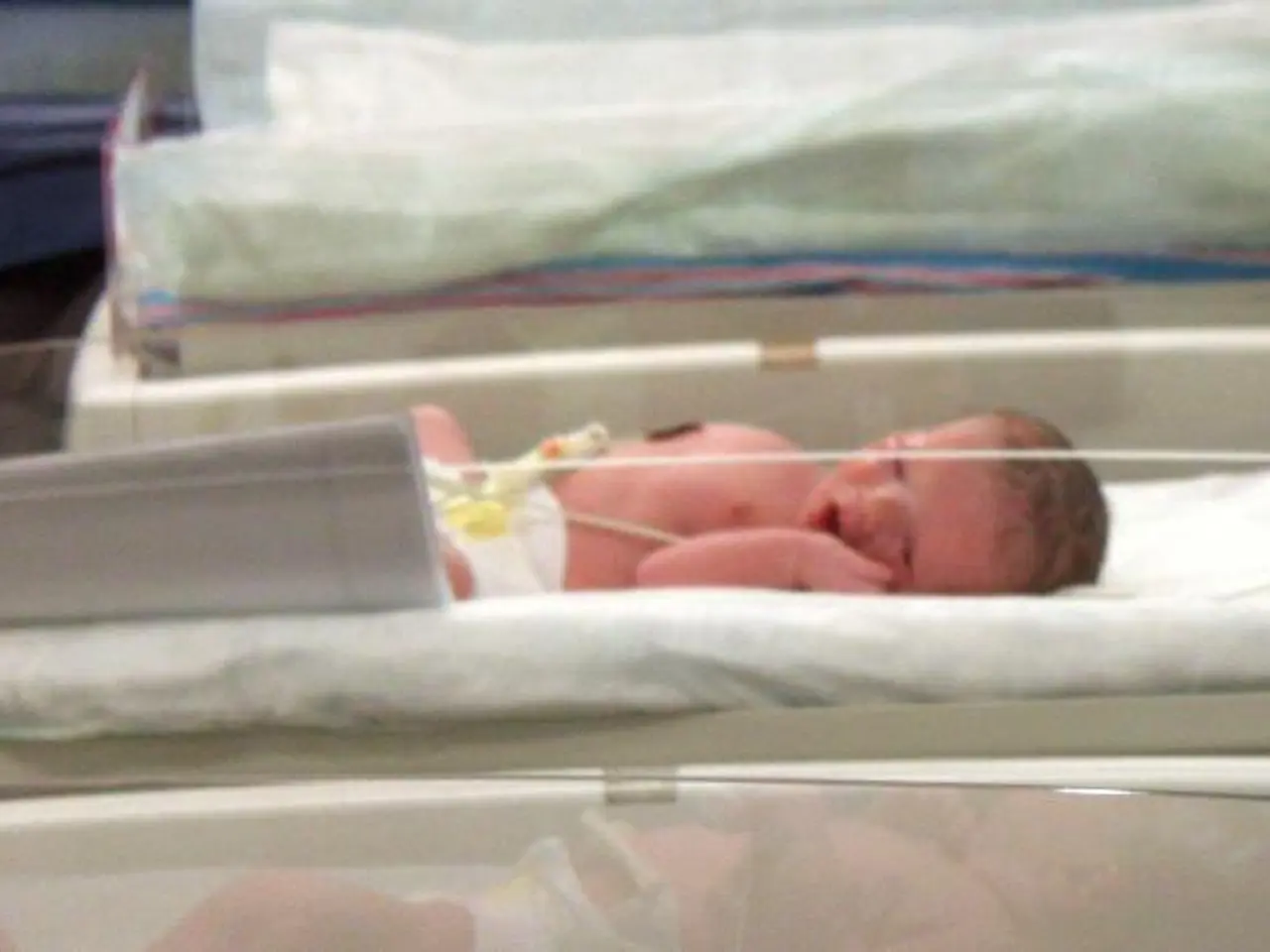Artificial Uterus Developed by Spanish Medical Professionals to Address a Key Reason for Miscarriages
In a significant breakthrough, researchers at the Institute for Bioengineering of Catalonia (IBEC) in Barcelona have developed an artificial womb that mimics the uterine lining, allowing for the first-ever real-time observation of a human embryo implanting into the simulated environment. This remarkable achievement could revolutionise our understanding of implantation processes and potentially lead to the development of drugs to increase the chances of a successful implantation.
The study, led by IBEC's head of bioengineering in reproductive health, Samuel Ojosnegros Martos, aims to shed light on why some embryos implant while others do not. The creation of this artificial womb offers a unique opportunity to observe implantation dynamics and fetal development at crucial stages, which has been limited by ethical and biological constraints in vivo.
The artificial womb, made of collagen and proteins, replicates real tissue, providing an ideal platform for researchers to study early developmental stages. By observing the implantation process in controlled conditions, scientists can identify the underlying causes of implantation failure and test interventions to improve implantation success.
One intriguing finding from the study is that healthier embryos exert more force when implanting compared to lower quality embryos, suggesting that the force an embryo can generate is key in successful implantation. This discovery could pave the way for the development of drugs to boost an embryo's implantation potential.
Tim Child, a professor of reproductive medicine at the University of Oxford, believes that this study could significantly improve success rates for in vitro fertilisation (IVF) treatments. Despite the fact that an IVF embryo with the correct genetic material (chromosomes) has an 80% chance of implantation, the process is not always successful. Child suggests that the point of failure in lab-made embryo transplantation into the uterus is common, and understanding the implantation process better could help doctors address this issue.
Interestingly, the study revealed a key difference between human and mouse embryos during the implantation process. While human embryos actively penetrate the artificial uterine lining, mouse embryos remain on the surface. This finding could lead to further research into the unique characteristics of human embryos that enable them to implant successfully.
Although the study does not discuss specific drugs or treatments currently being developed or tested, it opens up exciting possibilities for the future of reproductive medicine. By understanding the intricacies of the implantation process, researchers can work towards creating targeted molecular, genetic, or immunological treatments to optimise implantation, especially in cases where natural implantation fails due to immune or molecular dysfunctions.
The development of artificial wombs represents a significant step forward in our ability to study early pregnancy stages that were previously inaccessible. This groundbreaking research could lead to a reduction in miscarriages linked to implantation failure, ultimately making IVF treatments more successful and paving the way for precision medicine approaches based on observations from these artificial systems.
Science has shed new light on medical-conditions related to health-and-wellness, as researchers at IBEC in Barcelona develop an artificial womb that may revolutionize our understanding of implantation processes. This advancement could potentially lead to the development of drugs to boost an embryo's implantation potential, thus increasing the success rates for in vitro fertilization (IVF) treatments.




